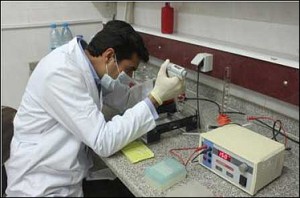 Zistboom:�Iranian researchers from Islamic Azad University, Shahreza Branch, increased the efficiency of removing nickel (II) toxic ion from aqueous solutions by modifying clinoptilolite nanozeolite.
Zistboom:�Iranian researchers from Islamic Azad University, Shahreza Branch, increased the efficiency of removing nickel (II) toxic ion from aqueous solutions by modifying clinoptilolite nanozeolite.In addition to removing nickel from wastewater, the researchers also succeeded in the simultaneous synthesis of a material with catalytic properties, Fars News Agency reported.
The researchers firstly converted clinoptilolite zeolite particles into micrometric particles (MCP) through mechanical methods and then converted the particles into nanoparticles (NCP).
In order to eliminate probable impurities caused during the milling process and also the impurities dissolved in water, they refluxed the obtained powder in addition to suspending stirring with magnet by using magnetic stirrer. Then, they made contact between NCP and DMG alcoholic solution and they prepared NCP exchanger modified with DMG ligand (NCP-DMG).
In this research, DMG�a selective ligand for nickel ion�was used to modify zeolite nanoparticles.
During the process, an adsorbent with desirable selectivity for nickel was obtained as well as increasing the adsorption capacity of nickel by zeolite.
In this research, sorption efficiency and selectivity of the adsorbent towards nickel ion were increased by modifying nanozeolite particles with dimethylglyoxime ligand, and a catalyst was obtained as co-product.
The use of natural zeolite is among the characteristics of the research because it is easily available and cost-effective.
The adsorbent produced in this method can be used in the removal of nickel ion from wastewaters of industries such as cell-fabrication and plating.
The sorbent can be used as a catalyst in the partial oxidation of some alcohols after adsorption of nickel.
By Zistboom�
The Iran Project is not responsible for the content of quoted articles.










